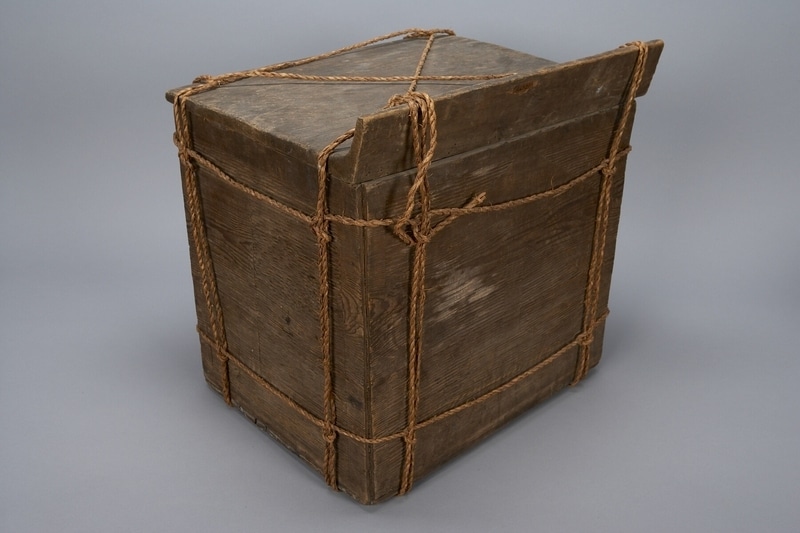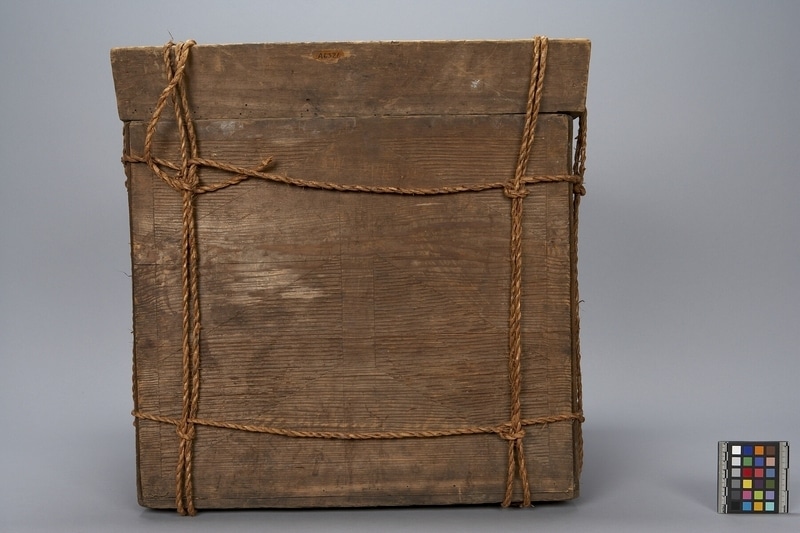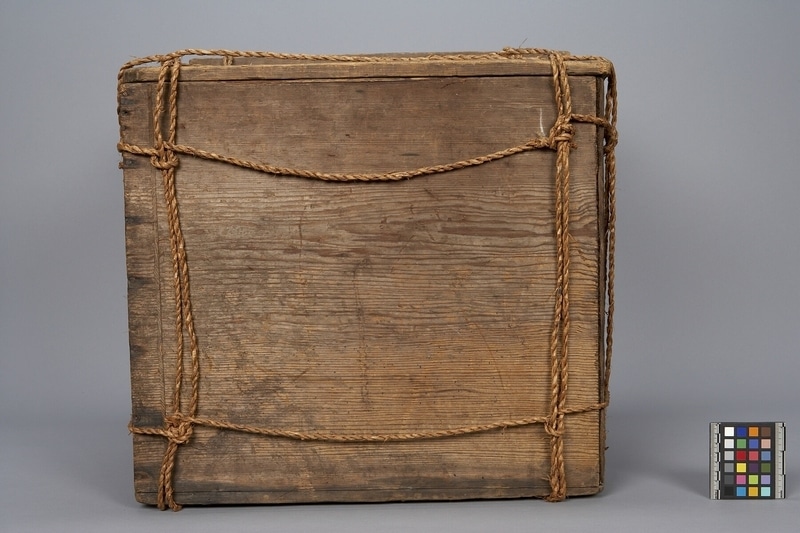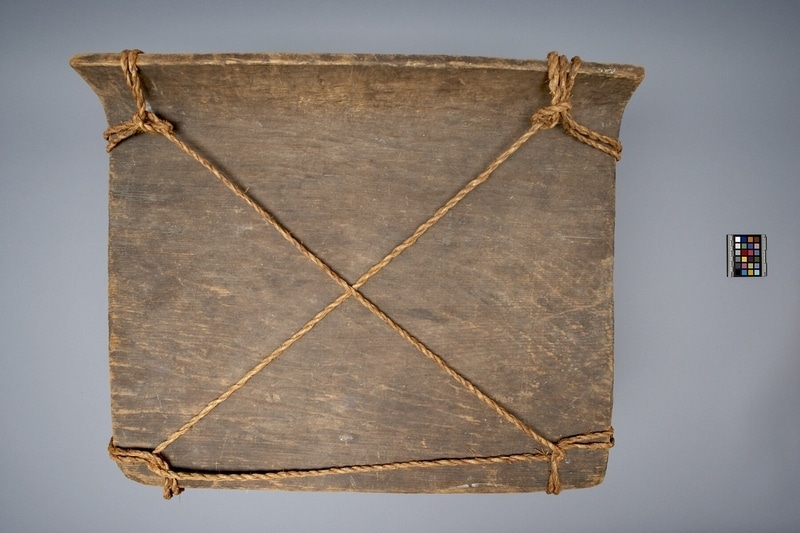Bentwood Box Item Number: A6321 from the MOA: University of British Columbia




Description
Bentwood box and lid made of cedar wood. Nailed at front and bottom. Lid has upstanding ridge on one side. Box and lid tied with cedar bark ropes in the traditional position. Front is undecorated except for one deep vertical undercut on the left side. Sides are decorated with varying sizes of plain rectangles, and ones with carved horizontal lines. Back of box has two chevrons, one plain, one with carved horizontal lines, then a solid triangle on bottom, and carved horizontal lines above top plain chevron, all within a rectangular border.
History Of Use
Bentwood boxes were used primarily for storage of food, implements, clothing and valuables. They were also used for cooking and serving food. They sometimes served as furniture or room dividers. They were also used as trade goods or gifts, and were symbols of wealth and prestige. Boxes used for ceremonial purposes were usually more highly decorated than those for everyday use.
Narrative
Northern-type box, as it is bent with the outside corners opened.
Cultural Context
storage
Specific Techniques
Bentwood, or kerfed-corner, containers are constructed by a process unique to the Northwest Coast Aboriginal peoples. The carver begins with a single straight-grained plank of red cedar, or sometimes yellow cedar, spruce, or yew. The surface of the plank is finished with chisels, adzes, and knives; in earlier times, it was smoothed further with sandstone or dried sharkskin. Then three parallel kerfs, or grooves, are carved out at measured points across the width of the board, at right angles to the long edge. The kerfs, which will become three corners of the box, allow the board to be steamed until the wood fibres are softened, and then carefully bent to form a box with symmetrical sides. The final corner, as well as a fitted base, are joined and fastened with pegs (through drilled holes) or laced with spruce root or twisted cedar withes (branches). Storage boxes also have fitted lids of cedar, hollowed from the inside. Finally, painted compositions may be applied to the completed box and shallow carving added to bring the forms into relief. A well-made bentwood box is watertight. Historically, most boxes were used to store preserved foods and material goods; plain cooking boxes could be used to steam or boil food by adding water and heated stones.
Item History
- Made in British Columbia, Canada before 1953
- Collected in Blunden Harbour, British Columbia, Canada and Ba'as, British Columbia, Canada
- Owned by Tom Johnson before December 22, 1953
- Received from Tom Johnson (Seller) and H. R. MacMillan (Funding source) on December 22, 1953
What
- Name
- Bentwood Box
- Identification Number
- A6321
- Type of Item
- box
- Material
- cedar wood and cedar bark
- Manufacturing Technique
- bent, steamed, fluted, nailed and kerfed
- Overall
- height 54.0 cm, width 55.0 cm, depth 44.0 cm
Who
- Culture
- Kwakwaka'wakw
- Previous Owner
- Tom Johnson
- Received from
- Tom Johnson (Seller) and H. R. MacMillan (Funding source)
Where
- Holding Institution
- MOA: University of British Columbia
- Made in
- British Columbia, Canada
- Collected in
- Blunden Harbour, British Columbia, Canada and Ba'as, British Columbia, Canada
When
- Creation Date
- before 1953
- Ownership Date
- before December 22, 1953
- Acquisition Date
- on December 22, 1953
Other
- Condition
- good
- Current Location
- Case 39
- Accession Number
- 2018/0001